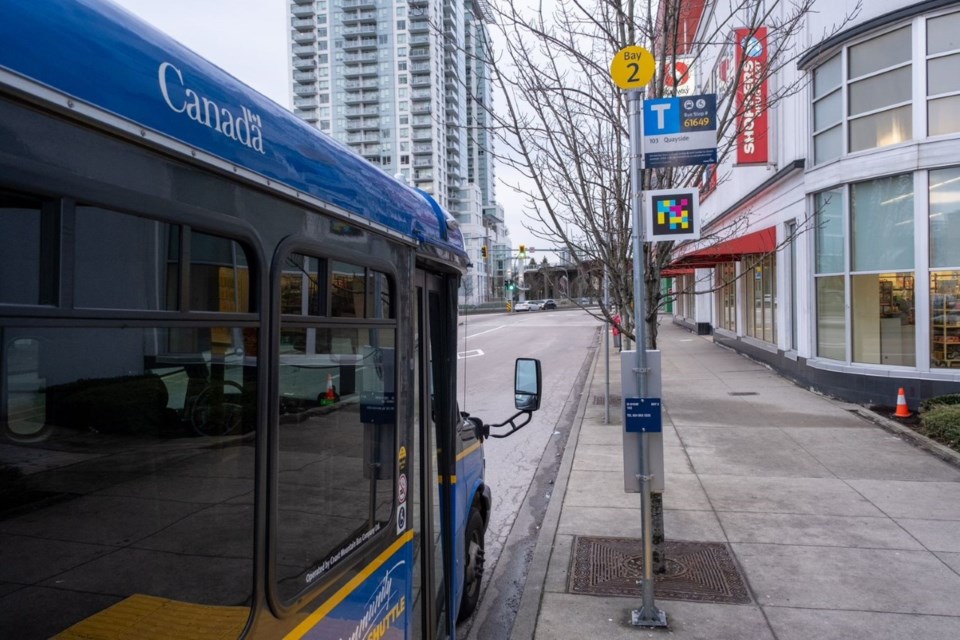After installing two accessibility tools at bus stops near the VCC campus on East Broadway in January, TransLink is finally ready to put them to the test.
The Accessible Navigation Project (ANP) is the first of its kind in Canada and is meant to help transit users with sight loss maneuver the system through audio wayfinding.
Coded decals have been installed at several locations throughout Metro Vancouver, including the two on East Broadway, to pilot the program for the next six months before evaluating it for future expansion throughout the region.
The decals can be scanned with the NaviLens smartphone app from up to 14 metres away and audio and haptic cues will help travellers experiencing sight loss navigate with access to real-time information.
The free NaviLens app is available in the Apple Store or Google Play.
The decals resemble colourful QR codes and can be scanned in all light conditions without focus required and while the user is in motion according to TransLink. In addition to wayfinding, once scanned it can identify nearby amenities and issue alerts.
“By bringing this advanced wayfinding technology to Canada for the first time, we’re aiming to create a more inclusive experience and empower our riders to navigate the transit system with ease and safety,” says TransLink CEO Kevin Quinn in a media release. “These types of innovative projects demonstrate our commitment to improving accessibility for all customers throughout the region.”
When the project was initially approved back in 2019 it was thanks to 2018 input from CNIB, Vision Loss Rehabilitation Canada, Alliance for the Equality of Blind Canadians, Canadian Council of the Blind, and TransLink’s Access Transit Users’ Advisory Committee.
The NaviLens system is already in use around the world in cities such as New York City, Liverpool, and Madrid and was tested on cereal boxes in the U.K. to read out allergens and label information.
Transit users may also have noticed tactile walking surfaces at bus stops, big pavers with raised bumps were installed or are in the process of being installed at every bus stop on TransLink-owned or leased property. Last year TransLink began installing braille signage at every bus stop throughout Metro Vancouver (roughly 8,400).
“Implementing this test technology shows TransLink is working to ensure its customers with sight loss can travel independently and confidently,” says Access for Sight-Impaired Consumers President Rob Sleath. “This project aims to enhance the abilities of those with sight loss by helping them travel throughout the TransLink system."
With files from Theresa McManus.



